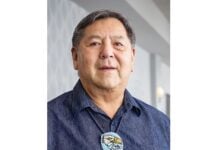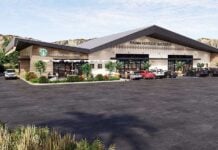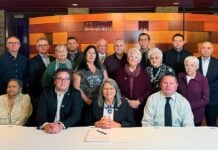OOLOGAH, OK – Cherokee Nation has acquired the historic Will Rogers Birthplace Ranch from the Oklahoma Historical Society, further expanding its tourism offerings. The tribe first announced its interest in the property in November of 2020 and celebrated the million-dollar investment in Rogers County.
“As part of the Cherokee Nation’s cultural tourism portfolio, we will be able to make the upgrades and maintenance the historic Rogers family property rightly deserves,” said Principal Chief Chuck Hoskin Jr. “We can also re-imagine what this site can be for tourists, for Cherokee Nation citizens, and for all Oklahomans in the future. By broadening out the well-known Will Rogers story and highlighting his early upbringing, his home and his family, we can use that history to educate others about the thousands of Cherokees here in Northeast Oklahoma, and how we all descended from a people who were removed to this part of the country. It helps tell the larger story of the Cherokee Nation.”

William Penn Adair Rogers was born to Clement Vann Rogers and Mary America Schrimsher on Nov. 4, 1879. He was the youngest of eight children and grew up on his family’s ranch in the Cooweescoowee District of Cherokee Nation. After leaving the ranch around 1905, Rogers pursued an entertainment career in Hollywood. Often referred to as “The Cherokee Kid” and “Oklahoma’s Favorite Son,” Rogers became one of the highest paid Hollywood actors in the 1930’s. He appeared in more than 70 films, had a syndicated newspaper column and made numerous radio appearances.
“Will Rogers has endured over time because he is somebody that everyday folks can identify with and relate to. His story – starting in such a small, rural setting and over his lifetime becoming the world’s biggest celebrity – is remarkable,” said Deputy Chief Bryan Warner. “His presence and the public’s opinion of him, especially here in Oklahoma, remain so high. That’s a testament to his greatness. I think today he would be very appreciative of the Cherokee Nation and the state working together to preserve his home and his legacy.”
The historic home dates to as early as 1873 and sat on more than 60,000 acres. The home served as a meeting place for commerce, government and community socials.
By the late 1890’s, the Curtis and Dawes Acts had reduced the ranch to about 140 acres. Throughout time, the family was able to purchase surrounding land but only regained 2,000 of the original 60,000 acres.
Around 1960, the ranch house was moved to its current location on top of the hill to prevent flooding once the Verdigris River was dammed to create Oologah Lake. Since that time, the homestead has been open to the public as a historic site, welcoming visitors from all over the world.
Today, the property spans 162 acres, which includes the historic ranch-style home, a caretaker’s home and two outbuildings. The museum showcases what life was like on a late 19th century ranch in Indian Territory and shares details about Will Rogers’ Cherokee lineage and his family’s relocation to Indian Territory as Old Settlers. Special exhibits explore his early life, before his success as one of America’s most iconic entertainers, including his entry into adulthood during the Curtis Act, allotment, statehood and other monumental events.
“This historic milestone reflects, not only our wonderful relationship with the Oklahoma Historical Society and the Will Rogers Memorial Museum, but with the family of Will Rogers,” said Chief Hoskin. “We are particularly appreciative of Will’s great-granddaughter, Jennifer Rogers-Etcheverry, for her guidance and support and for her continued involvement as we move forward.”
The Will Rogers Birthplace Ranch will continue operations throughout this season under Cherokee Nation Businesses with plans for renovations next year.














































